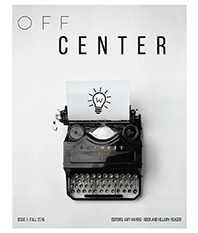RES 2: Close Reading and Annotating Sources
Dynamic PDF: Close Reading and Annotating Sources
What is Annotating?
Annotating and learning how to engage a “close reading” of sources is an effective practice that can help you with reading comprehension and critical thinking. This is especially useful when studying for quizzes, tests, and exams or writing papers that require analysis of a reading and/or the incorporation of outside sources. It can also be beneficial to annotate course documents such as assignment sheets to ensure the most important information stands out from the rest. Effective annotation takes practice but regularly attempting this skill will help you become more efficient and successful.
Getting Started
- First, you may want quickly read the text at hand. If you are conducting research, find out if the source is credible and relevant to your project. If you are annotating an assigned reading or course document, you may want to consider the purpose for your reading. What does your instructor want you to get out of this text?
- After this, you may have a better idea of how to look for important information. Ask yourself what information is important enough to return to at a later Will you need to know the material for an exam, or should you be searching for information of your own interest for a writing assignment?
- Next, you will need to take notes as you read. Remember, the notes you take should be for personal use, so feel free to use your own shorthand. Create a system that works for you. For example, you may want to underline important points, circle key words, and write notes in the right margin. You may also be able to highlight and make comments on digital texts if, for example, you have a tablet and stylus.
- Sometimes writing in textbooks might not be an option. If you can’t write on your text, you will need to find another way to take notes. For example, you might keep a notebook or open computer document to type or write notes about the text you are reading. When using this method, make sure you write down the title of the text and the section or page number you are annotating in case you need to refer back to this later.
There is no right or wrong way to annotate a text, and most people develop their own preferred method. For example, some people use highlighters, some use color-coded tabs, and others might simply use a pencil to underline parts. Try several methods until you find the one that works for you. Some other options include:
- Explaining the text to a friend
- Summarizing the text in 3-5 sentences in your own words
- Using sticky notes
- Making an outline of important points or events
- Performing a reflective freewrite (setting the text aside and writing what comes to mind)
- Forming a reading discussion group
The following Source Reading Guide may help you find the most important information of a text you are reading.
Source Reading Guide
- Why are you reading this text? In other words, what is your purpose for reading?
- What is the main idea of this text?
- Write down some unfamiliar words in the text here and look them up, if needed.
- Write down key terms.
- How does this text connect to other texts or ideas you have encountered?
- What ideas might you need for class discussion, an exam, or a paper? Write them down and make note of the section or page number.
- How do you feel about the most important ideas? What are your thoughts or reactions to the important points you have read?
Office Phone
(615) 904-8237
Location
Walker Library, Room 362
Address:
Read about our 45th Anniversary event and take a look at our growing digital archive!



